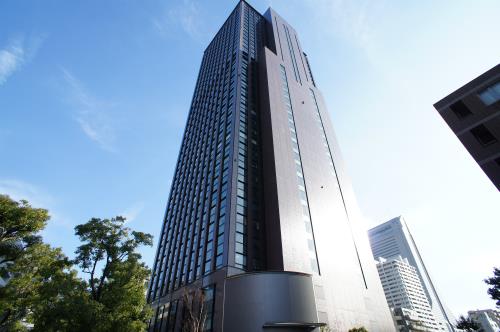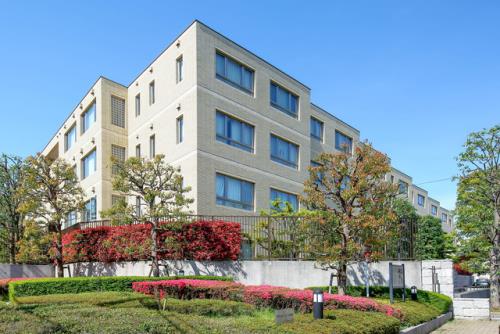Tokyo’s high class residential areas with the historical names not shown on a map
Though there are many high class residential areas with historical prestige scattered throughout Tokyo, their names cannot be found on any maps.
The names of these places no longer exist–as they have been changed due to address unifications or the changing of town names–they are still known locally and retain their reputation from the olden days. Here we would like to introduce Tokyo's high class residential areas using their old prestigious names–addresses and station names–and can only be seen on historical maps or are known because of the names of long standing condominiums in the area.

The names of these prestigious areas that no longer exist are: Sengokuyama, Akasaka Hikawacho, Azabu Kasumicho, Azabu Kougaicho, Mita Tsunamachi, Chojamaru, Suwayama. The Jonan Gozan (Ikedayama, Gotenyama, Shimazuyama, Hanabusayama, Yatsuyama), etc.
These names still have a high branding power and evoke a high class image when you find them in the names of condominiums as they are in areas of historically prestigious towns lined with stately mansions, luxury rental apartments, and luxury condominiums.
The Jonan Gozan
For information about the Jonan Gozan area, please follow the link below.
- The Jonan Gozan - 5 hilltop brand residential areas in Tokyo
- The 5 mountains are respectively: Ikedayama, Gotenyama, Shimazuyama, Hanabusayama, and Yatsuyama. These areas are all currently well-known high class residential areas and as a whole, the Jonan Gozan is regarded very highly within central Tokyo.
Sengokuyama
The area covers the hill top location of Roppongi's 1 chome and 5 Chome of Toranomon, Minato-ku.
During the Edo Era this area was home to the residence of the Sengoku family (from Tajimanokuni Hyogo Prefecture) known as the Izushi clan. After the Meiji Era this area was home to the residences of the Sengoku family’s nobility and the Higashikuninomiya family. The area is on a spacious hill top with firm ground and lots of greenery. As a result, in the area there are many old temples, embassies, and hotels. In 2012, a skyscraper complex called ARK Hills Sengokuyama Mori Tower was built by Mori Building Co., Ltd. This building which has become a new landmark for the area and provides upscale modernity with large green spaces.



Luxury Apartments in the Sengokuyama area
Shiroyama
The area covers the current location of 4 Chome of Toranomon, Minato-ku.
It is said that in the olden days a powerful family built a castle on the hilltop area around 4 Chome of Toranomon, and thus came to be called Shiroyama. During the Edo Era, the area around Kamiyacho Station was called “Nishikubo” and it was home to many samurai family residences such as the Toki family. During the Meiji Era the area was named “Nishikubo Shiroyama”. Currently, the area is occupied by the Shiroyama Garden, Shiroyama Trust Tower, and the Swedish Embassy.



Luxury Apartments in the Shiroyama area
Akasaka Hikawacho
The area covers to the hilltop location of 6 Chome of Akasaka, Minato-ku.
The area name has existed since 1966 and was derived from Akasaka Hikawa Shrine near the area. Akasaka Hikawa Shrine is a venerable Shinto shrine which built in 951 to enshrine Susano no Mikoto. During the early Edo Era there was the residence of ASANO Takumi no Kami, who was famous for Chushingura, near Hikawa Park. During the early Meiji Era there area was home to the residence–where "Akasaka Kids Teens Hall" is now–in which Kaishu Katsu spent his later years. The venerable name of the area where many Daimyos set up their residences during the Edo Era. Many apartments built in the area still carry on the name of Akasaka Hikawacho.






Luxury Apartments in the Akasaka Hikawacho Area
Azabu Kasumicho
The area stretchs covers the area east of Nishi-Azabu Crossing, the neighboring area of the current 1 Chome Nishi-Azabu, and a part of 3 Chome Nishi-Azabu and 6-7 Chome Roppongi, Minato-ku.
The name Azabu Kasumicho was used from 1872 to 1967. Sakurada Shrine in 3 Chome Nishi-Azabu was once called Kasumiyama Shrine and the name of Kasumicho derives from this. During the Edo Era the large suburban residence of Abe Harima no kami was located in the area. After the Meiji Era an extensive portion of the area was owned by the Mitsui family and there was a dormitory used for educating their children in the spot where "Azabu Kasumicho Park Mansion"–famous as a hundred million yen condominium–currently stands. During the Taisho Era a streetcar ran in Kasumicho. Today, many restaurants and facilities still use the name of Kasumicho such as Azabu Kasumicho Church. The area is a reserved quiet high class residential area away from the nearest major streets.






Luxury Apartments in the Azabu Kasumicho Area
Azabu Kougaicho
The area includes the current location of 6-7 Chome Minami-Aoyama and a part of 2-4 Chome Nishi-Azabui, Minato-ku.
The area's name was used from the Edo Era until 1967. It was derived from the bridge named Kougaibashi the stretches over the Kougai River that flowed through this area. (Kougai River is presently flowing underground in the area and slightly rises to ground level near the Tengenbashi area). During the Edo Era many Samurai residences were built here. Currently the area is known as a trendy and fashionable place near Gaien Nishi Dori Street with many high class residences nearby built away from the street.
The name Kougaicho can still be seen in the name's of Kougai Park, Kougai Elementary School, and some of the condominiums in the area.






Luxury Apartments in the Kougaicho Area
Mita Tsunamachi
The area covers the hill top location of 2 Chome of Mita, Minato-ku.
The name Mita Tsunamachi was used from 1872 to 1967. During the Edo Era many Samurai residences with large gardens built here. During the Taisho Era the head of the Mitsui family built the “Tsunamachi Mitsui Club”–as a guest house for the Mitsui Zaibatsu–on the vacant land of about 6000 tsubo where the residence of Hyuga Sadowara clan of Shimazu family and that of Aizu clan once existed.
The Tsunamachi Mitsui Club is still currently used as a guest house for Mitsui Group. The place where the Italian Embassy is currently built was the location of the second residence of the Iyo Matsuyama clan, and is famous known as the ground where the Ako lordless samurais committed hara-kiri. The Japanese traditional garden style from the Edo era has been preserved in the Italian embassy with scenic beauty. The neighborhood is quiet, full of greenery, and high-quality condominiums are built all around it's spacious grounds.






Luxury Apartments in the Mita-Tsunamachi Area
Chojamaru
The area covers the current 2 Chome, Kami-Osaki and a part of 1 Chome, Mita, Meguro-ku.
The name was derived from a powerful family that moved to this area–during the Muromachi Era–known as Shirokane Choja. Later the area became the home of Samurai residences, and during the early years of the Showa Era the area was developed as an early modern residential area by Yaichiro Yoshida who was a successful kimono merchant. During the pre-war (WWII) times many high-ranking officials and politicians, and prominent firm's presidents set up residences in this area. Today low-rise high-class residences are spread throughout stretching from the area between Ebisu Garden Place and Institute of Nature Study through to the area neighboring Meguro Station. It is a convenient area along JR Yamanote line and is adjacent to Ebisu Garden Place. The name Chojamaru can be seen in the names of many of the luxurious condominiums in the area.































